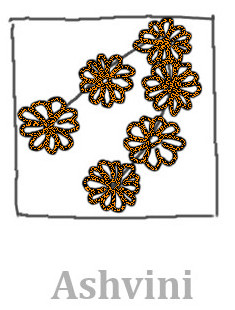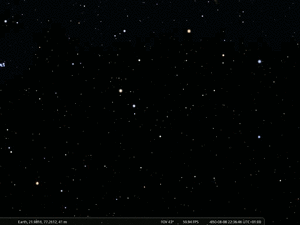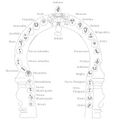Ashvini: Difference between revisions
From All Skies Encyclopaedia
Ashvini
No edit summary |
No edit summary |
||
| Line 24: | Line 24: | ||
File:婁宿(仏像図彙).png|Ashvini (Chinese) |
File:婁宿(仏像図彙).png|Ashvini (Chinese) |
||
File:1 ashvini draw.png|Ashvini reconstructed by Jones (1720). |
File:1 ashvini draw.png|Ashvini reconstructed by Jones (1720). |
||
File:Nakshatra temple magDraw lbl.jpg|Display of all 28th nakshatra in silver arch with candles in Tirupperunthurai (Athmanathaswamy temple) near Aranthangi, India, 10th century CE. (SMH 2025). |
|||
File:Nakshatras in Temple draw+lbl 4ase.jpg|Display of all 28th nakshatra in a door frame in Tirupperunthurai (Athmanathaswamy temple) near Aranthangi, India, 10th century CE. (SMH 2025). |
|||
</gallery> |
</gallery> |
||
Revision as of 15:52, 30 October 2025
Aśvini is the name of an Indian twin deity that is asscoiated with the first nakshatra. As gods they initially represent physicians; as asterism they are associated with the star β and γ Arietis in Aries. However, the oldest reconstruction of the image shows a horse head with three stars, suggesting that α Arietis might also have belonged to the asterism.
Etymology and History
Name Variant:
- Dasra
Origin of Constellation
Asvini is mythologically associated with twin physicians of the Gods. It is represented by the face of a horse, the word asva means a horse.
Identification
β, γ Arietis are certain,
(perhaps also α Ari in some variants, as sometimes three stars are drawn)
Transfer and Transformation of the Constellation
Mythology
mnemonic tales and cultural significance
Weblinks
References
- References (general)












